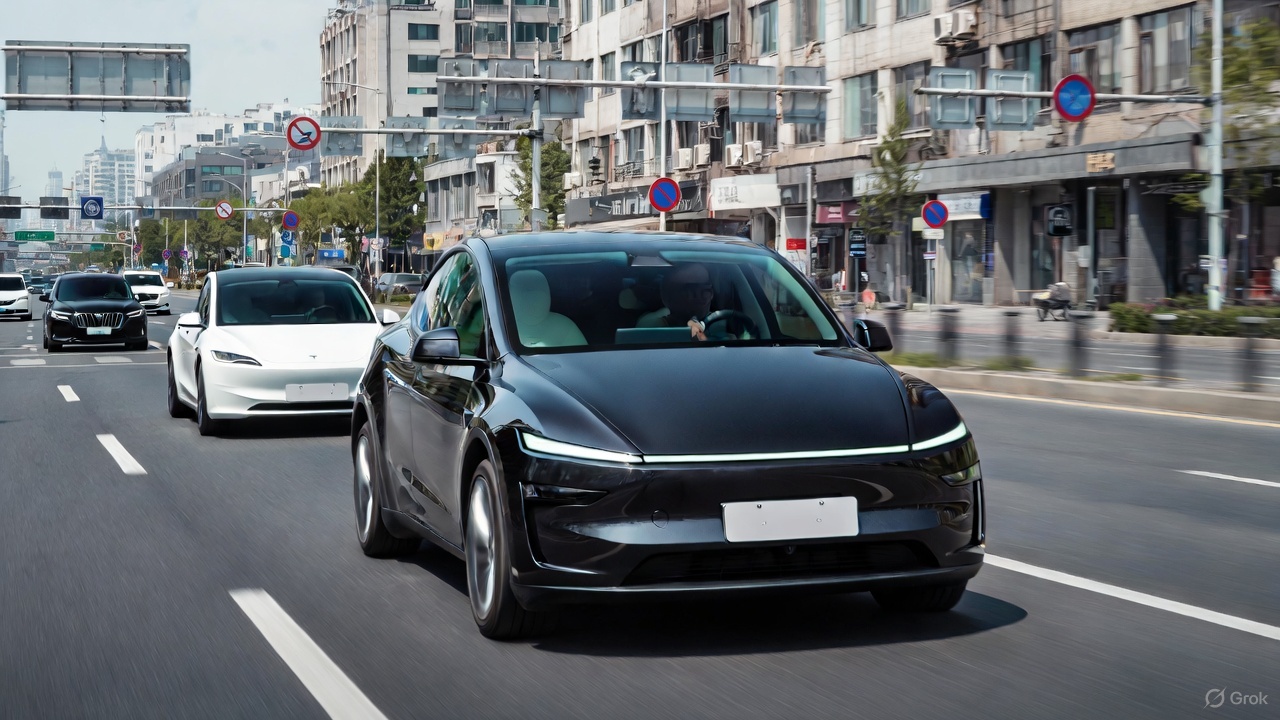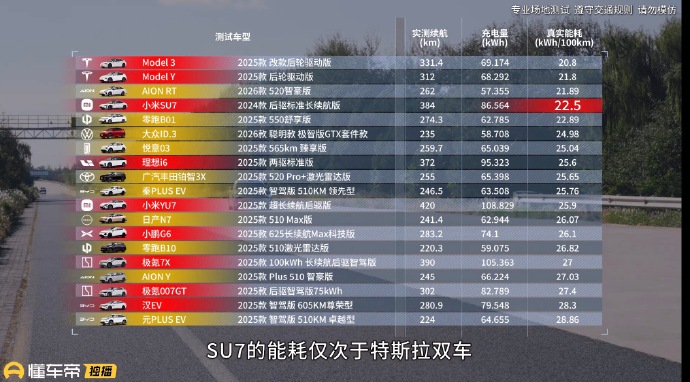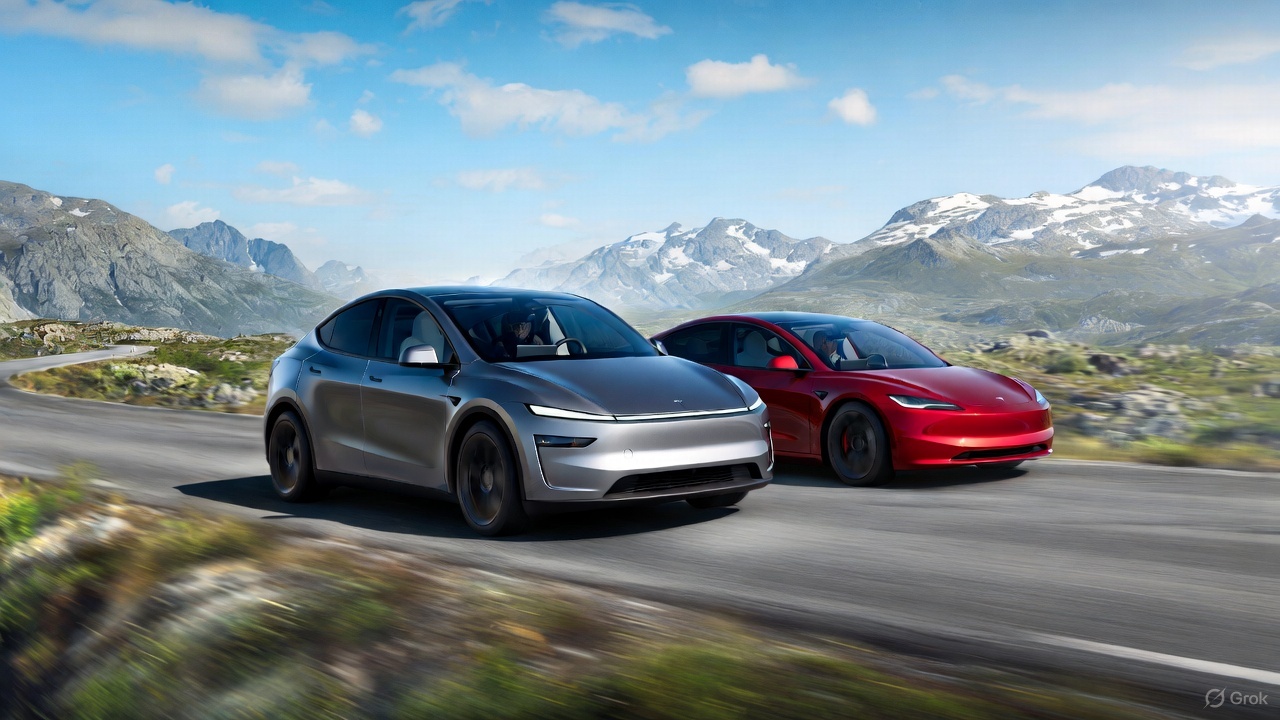

Tesla Model 3
Tesla Gigafactory 3 starts coming to life as construction begins in China [Updated]
It’s been barely a week since Tesla CEO Elon Musk attended Gigafactory 3’s groundbreaking ceremony, but the location for the upcoming battery and electric car factory is now ablaze with life. As could be seen in footage taken on Thursday local Shanghai time, work on Gigafactory 3 is already going full throttle, as evidenced by the sheer number of heavy equipment operating on the site.
The recent footage of the upcoming facility was shared with Teslarati by Tesla owner-enthusiast Vincent Yu, who is currently visiting Shanghai. Taken using a drone, the short footage shows heavy machinery busily working on a section of Tesla’s 864,885-square meter plot of land in Shanghai’s Lingang Industrial Zone. Vincent also shared some images taken around the land on Twitter, showing trucks seemingly moving dirt from the site.
(Pictures) Tesla Shanghai Lingang Gigafactory 3- Jan 17th 2019 $TSLA #Tesla #China #TeslaChina #GF3 pic.twitter.com/Yp7mhfLGLM
— vincent (@vincent13031925) January 17, 2019
The recently shared footage from Gigafactory 3 is but a few seconds long, but it does prove one notable point — once the groundbreaking ceremony for the site was done, the construction of the facility would likely proceed at an extremely rapid pace. China’s construction workforce, after all, is known for its fast, almost surgically-precise buildouts. Just last year, for example, Elon Musk lauded the country’s workforce on Twitter, sharing a report about Chinese workers building a railway station in just nine hours. In his post, Musk noted that “China’s progress in advanced infrastructure is more than 100 times faster than the US.”
In a country such as China, though, these rapid buildouts are usually accomplished with support from the government. Fortunately for Tesla, this appears to be the case, as evidenced by the state’s warm reception to Elon Musk during his visits to the country, as well as the help the electric car maker has received in securing partial funding for Gigafactory 3 (to name a few).
Tesla, for one, was allowed to become the sole owner of Gigafactory 3 — something that was not granted to other automakers operating in the country. Reports have also emerged pointing to local banks competing to grant Tesla low-interest loans to fund part of Gigafactory 3’s construction. The government’s favor was evident when Tesla placed its bid on the 864,885-square meter plot of land in Shanghai’s Lingang Industrial Zone as well, as the company was able to secure the land without any rival bidders. Lastly, China Construction Third Engineering Bureau Co., Ltd, the company building the facility, is a subsidiary of China Construction, which is owned by the government.
This favor on Tesla was no more evident during Elon Musk’s recent visit to the country, though. After the groundbreaking ceremony for Gigafactory 3, Musk met with Chinese Premier Li Keqiang in Beijing, who is widely considered as the country’s #2 after President Xi Jinping. During their talk, which was held at the Tower of Violet Light in Beijing — a place reserved for distinguished guests — Li openly listened to Musk’s ideas for Gigafactory 3, even the more ambitious ones such as making a facility that behaves similar to a “living being.” Li even lightly suggested that China can just issue Musk a “Chinese Green Card,” so that he can pursue his ideas in the country.
The timeframe for the construction of Gigafactory 3 is ambitious. Tesla aims to complete the initial construction of the facility by summer’s end. The company also intends to start the production of affordable Model 3 variants in the battery and electric car factory by the end of the year. Now that work has commenced on the factory’s site, though, Tesla’s aggressive timetable just became more feasible.
Watch the most recent footage of Gigafactory 3 in the video below.
Update: Vincent has provided a more extensive video from his recent drone flyover of Gigafactory 3.

News
Tesla dominates in the UK with Model Y and Model 3 leading the way

Tesla is dominating in the United Kingdom so far through 2025, and with about two weeks left in the year, the Model Y and Model 3 are leading the way.
The Model Y and Model 3 are the two best-selling electric vehicles in the United Kingdom, which is comprised of England, Scotland, Wales, and Northern Ireland, and it’s not particularly close.
According to data gathered by EU-EVs, the Model Y is sitting at 18,890 units for the year, while the Model 3 is slightly behind with 16,361 sales for the year so far.
The next best-selling EV is the Audi Q4 e-tron at 10,287 units, lagging significantly behind but ahead of other models like the BMW i4 and the Audi Q6 e-tron.
GOOD NEWS 🇬🇧 Tesla is absolutely crushing the UK electric vehicle market in 2025 💥
The numbers are in, and the dominance is clear. With an impressive amount of 42,270 vehicles delivered year-to-date, the brand now commands a solid 9.6% market share of the total auto market 🆒… pic.twitter.com/dkiGX9kzd0
— Ming (@tslaming) December 18, 2025
The Model Y has tasted significant success in the global market, but it has dominated in large markets like Europe and the United States.
For years, it’s been a car that has fit the bill of exactly what consumers need: a perfect combination of luxury, space, and sustainability.
Both vehicles are going to see decreases in sales compared to 2024; the Model Y was the best-selling car last year, but it sold 32,610 units in the UK. Meanwhile, the Model 3 had reached 17,272 units, which will keep it right on par with last year.
Tesla sold 50,090 units in the market last year, and it’s about 8,000 units shy of last year’s pace. It also had a stronger market share last year with 13.2 percent of the sales in the market. With two weeks left in 2025, Tesla has a 9.6 percent market share, leading Volkswagen with 8 percent.
The company likely felt some impact from CEO Elon Musk’s involvement with the Trump administration and, more specifically, his role with DOGE. However, it is worth mentioning that some months saw stronger consumer demand than others. For example, sales were up over 20 percent in February. A 14 percent increase followed this in June.
News
Tesla Model 3 and Model Y dominate China’s real-world efficiency tests
The Tesla Model 3 posted 20.8 kWh/100 km while the Model Y followed closely at 21.8 kWh/100 km.

Tesla’s Model 3 and Model Y once again led the field in a new real-world energy-consumption test conducted by China’s Autohome, outperforming numerous rival electric vehicles in controlled conditions.
The results, which placed both Teslas in the top two spots, prompted Xiaomi CEO Lei Jun to acknowledge Tesla’s efficiency advantage while noting that his company’s vehicles will continue refining its own models to close the gap.
Tesla secures top efficiency results
Autohome’s evaluation placed all vehicles under identical conditions, such as a full 375-kg load, cabin temperature fixed at 24°C on automatic climate control, and a steady cruising speed of 120 km/h. In this environment, the Tesla Model 3 posted 20.8 kWh/100 km while the Model Y followed closely at 21.8 kWh/100 km, as noted in a Sina News report.
These figures positioned Tesla’s vehicles firmly at the top of the ranking and highlighted their continued leadership in long-range efficiency. The test also highlighted how drivetrain optimization, software management, and aerodynamic profiles remain key differentiators in high-speed, cold-weather scenarios where many electric cars struggle to maintain low consumption.

Xiaomi’s Lei Jun pledges to continue learning from Tesla
Following the results, Xiaomi CEO Lei Jun noted that the Xiaomi SU7 actually performed well overall but naturally consumed more energy due to its larger C-segment footprint and higher specification. He reiterated that factors such as size and weight contributed to the difference in real-world consumption compared to Tesla. Still, the executive noted that Xiaomi will continue to learn from the veteran EV maker.
“The Xiaomi SU7’s energy consumption performance is also very good; you can take a closer look. The fact that its test results are weaker than Tesla’s is partly due to objective reasons: the Xiaomi SU7 is a C-segment car, larger and with higher specifications, making it heavier and naturally increasing energy consumption. Of course, we will continue to learn from Tesla and further optimize its energy consumption performance!” Lei Jun wrote in a post on Weibo.
Lei Jun has repeatedly described Tesla as the global benchmark for EV efficiency, previously stating that Xiaomi may require three to five years to match its leadership. He has also been very supportive of FSD, even testing the system in the United States.
News
Tesla Model 3 and Model Y named top car buys in Norway
Despite growing competition from European and Korean brands, both models stood out for their balance of price, performance, and everyday usability.

Norway’s annual roundup of the best car purchases featured Tesla’s two main sellers this year, with the Model 3 and Model Y securing top positions in their respective segments.
Despite growing competition from European and Korean brands, both models stood out for their balance of price, performance, and everyday usability. The verdict comes as electric vehicle adoption remained above 95% of new vehicle sales in the country.
Tesla Model 3 strengthens its value position
Among compact EVs, the Tesla Model 3 maintained its position as the best overall buy thanks to its strong blend of performance, efficiency, and updated features. Reviewers noted that every trim offered compelling value, especially with the all-electric sedan’s improved cabin ergonomics and the return of the turn-signal stalk, which was one of the few previous complaints among drivers.
The Model 3’s mix of long-range capability, low operating costs, and responsive handling has continued to set the benchmark for compact EVs in Norway. While competitors from Hyundai, Volkswagen, and Peugeot have narrowed the gap, Tesla’s price-to-capability ratio has remained difficult to beat in this segment, Motor.no reported.
“The Model 3 clearly offers the best value for money in the compact class, no matter which version you choose. Now it also gets the turn signal lever back. This eliminates one of the few flaws in a driving environment that many believe is the best on the market,” the publication wrote.
Tesla Model Y claims its crown
The Tesla Model Y emerged as Norway’s top family-car purchase this year. The latest refresh introduced improvements in ride quality, styling, and interior materials, allowing the Model Y to deliver a more premium driving experience without a substantial price increase.
Reviewers praised its spacious cabin, strong safety profile, and practical range, all of which reinforced its appeal for families needing an all-purpose electric crossover. The Model Y remains especially notable given its continued popularity in Norway even as Tesla faces declining sales in other global markets.
“The Model Y is back as the winner in the family class. The upgrade in the new year was even more extensive than expected. It is a slightly more elegant and significantly more comfortable Model Y that solidifies its position as Norway’s best car purchase in the most important class,” the Norwegian motoring publication noted.








